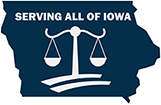- Emmetsburg Motorcycle Accident Injury Attorneys
- Phone: 641-792-3595
- Directions
When tragedy strikes, motorcycle injury attorneys act as steadfast defenders for riders. With a focus on motorcycle accidents, they adeptly manage legal challenges to ensure justice and compensation for injured riders.
Be Aware of Internal Injury Signs After a Motorcycle Accident
Motorcycle accidents carry a high risk of serious injury due to the lack of protection compared to passenger cars. In mid-July 2014, an Iowa motorcyclist was severely injured by a hit-and-run driver, highlighting the vulnerability of bikers. Each year, many motorcyclists require hospitalization for severe injuries, some of which involve internal damage that may not be immediately apparent. Recognizing the signs of internal injuries is crucial for prompt medical attention.
Types of Internal Motorcycle Accident Injuries
Internal injuries from motorcycle accidents are common and can be severe. Blunt trauma or penetration during an accident can cause internal bleeding in the abdomen, head, or other areas. While some internal bleeding might stop on its own, severe cases may require surgical intervention. Here are some types of internal injuries that motorcyclists might sustain:
- Tears in the Aorta, Superior or Inferior Vena Cava, or Branches: These major blood vessels can be severely damaged in a crash.
- Trauma to Organs: The spleen and liver are particularly susceptible to tears, cuts, or blunt trauma.
- Bleeding Around the Lungs: This can lead to life-threatening complications.
- Intracranial Hemorrhage: Bleeding within the brain is a critical emergency.
These injuries can result from being thrown from the bike, run over by a vehicle, or other impacts during a collision.
Internal Injury Signs to Know
It's important to be aware of the signs that may indicate internal injuries. Some symptoms are obvious, while others are subtle and not immediately visible. Look out for the following:
- Loss of Consciousness or Headache: These can indicate internal brain hemorrhaging, necessitating immediate medical care.
- Swelling or Pain in the Abdomen: This may result from internal bleeding in the abdominal area.
- Discolored Skin: Deep purple skin discoloration can signal internal bleeding as blood seeps into soft tissues.
- Light-Headedness or Fainting: Internal blood loss can cause dizziness and fainting, requiring urgent medical evaluation.
If you experience any of these symptoms after a motorcycle accident, seek immediate medical attention.
What Happens If I Was Partially at Fault in an Iowa Motorcycle Accident?
In Iowa, being partially at fault in a motorcycle accident affects the compensation you can recover. Iowa follows a comparative negligence rule, meaning your compensation is reduced by your degree of fault. For instance, if you were 25% at fault for an accident and your damages totaled $100,000, you would receive $75,000 after a 25% reduction.
It's crucial to prove fault, negligence, and other legal aspects accurately. An attorney can help gather evidence, protect your rights, and demonstrate the other party's liability, which is essential in reducing your degree of fault and maximizing your compensation.
Iowa’s Comparative Negligence Rules
Iowa’s comparative negligence law allows you to recover damages as long as you are less than 51% responsible for the accident. The settlement amount is proportionally reduced by your fault percentage. Properly demonstrating negligence and fault is vital, and an experienced attorney can provide the necessary legal assistance.
Too Tight? Too Big? A Guide to Properly Fitting Motorcycle Helmets
Properly fitting helmets are crucial for both safety and comfort while riding. Many riders, especially new ones, may not realize how snug a helmet should be. Here are some checks to ensure your helmet fits correctly:
1. Forehead Gap: A properly fitting helmet should not allow you to slip your pinky between your forehead and the helmet.
2. Lifting the Helmet: With the chin strap secured, you should not be able to lift the helmet from your head.
3. Red Marks or Pressure Points: While snug, the helmet should not leave red marks or deep indentations.
4. Side to Side Head Shake: Your skin should move with the helmet when you shake your head side to side. If the helmet moves independently, it’s too big.
5. Room for Face Shields: Ensure enough space between your face and the shield to avoid contact with your nose or chin.
Never use a helmet involved in a previous accident, as unseen damage can compromise its effectiveness in future impacts.
Consulting a Motorcycle Accident Attorney
The toll from severe motorcycle injuries can encompass substantial medical expenses and long-term care costs for victims and their families. Lost wages may compound matters, especially if employment becomes unrealistic for an extended period. Getting help from a motorcycle accident attorney allows the pursuit of comprehensive compensation, from financial damages and emotional distress such as pain and suffering.
Victims of these accidents should seek consultation with a motorcycle accident attorney, as damages may be extensive and recovery of compensation is important.
At Walker, Billingsley & Bair, our motorcycle accident attorneys can represent you in dealings with your insurance company, or when filing a personal injury claim. Set up your consultation now by calling 641-792-3595.

